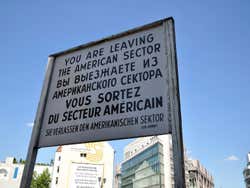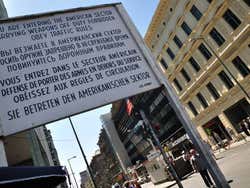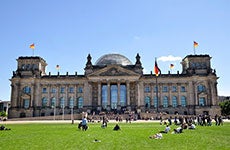
Checkpoint Charlie
Checkpoint Charlie was the most renowned crossing point between the German Democratic Republic and the Federal Republic of Germany during the Cold War.
Checkpoint History
The name “Checkpoint Charlie” also known as “Checkpoint C” comes from the third letter of the International radiotelephony spelling alphabet, also called NATO phonetic alphabet.
Many of the checkpoints that were built between East Berlin and West Berlin were removed when the Berlin Wall was constructed. Checkpoint Charlie was nominated the only border crossing for the Allies and foreigners. In 1971 the mayor of West Berlin obtained permission to allow West Berliners to access East Berlin by applying for special visas.
East Germans, on the contrary, were not permitted to enter West Germany until the fall of the Berlin Wall. Many tried to trick the guards at Checkpoint Charlie to get to the West, but most were unsuccessful and risked being shot then and there.
One of the most renowned cases of failed escape attempts was that of Peter Fechter. The East German teenager was on the verge of getting to West Berlin when he was shot by a soldier and was left to bleed to death in the “death strip”, as neither side dared trespass to save him.
Checkpoint Charlie in Present Day
In 2001, a replica of the sign “You Are Now Leaving the American Sector” and the guard house was placed at Checkpoint Charlie.
Visitors can take photographs at the guard house. There is also a photograph collection and documents of that time.
The Checkpoint Charlie Museum (Wall Museum – Checkpoint Charlie) is located near the former border crossing. It is packed with interesting exhibitions about the Cold War.


Transport
U-Bahn: Kochstraße, line U6.
Nearby places
Checkpoint Charlie Museum in Berlin (37 m) Topography of Terror in Berlin (462 m) Jewish Museum Berlin (653 m) Gendarmenmarkt (695 m) Memorial to the Murdered Jews of Europe (1.1 km)

